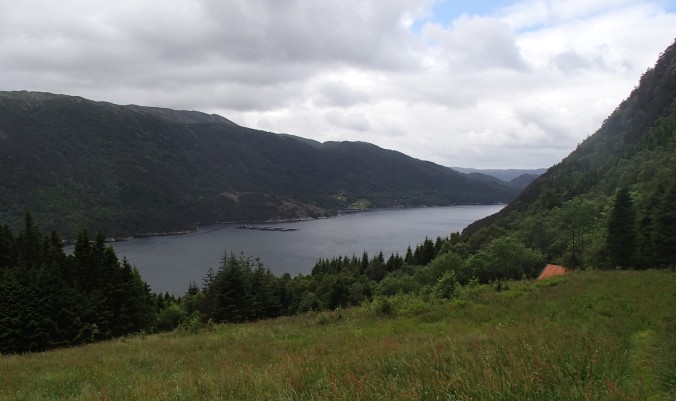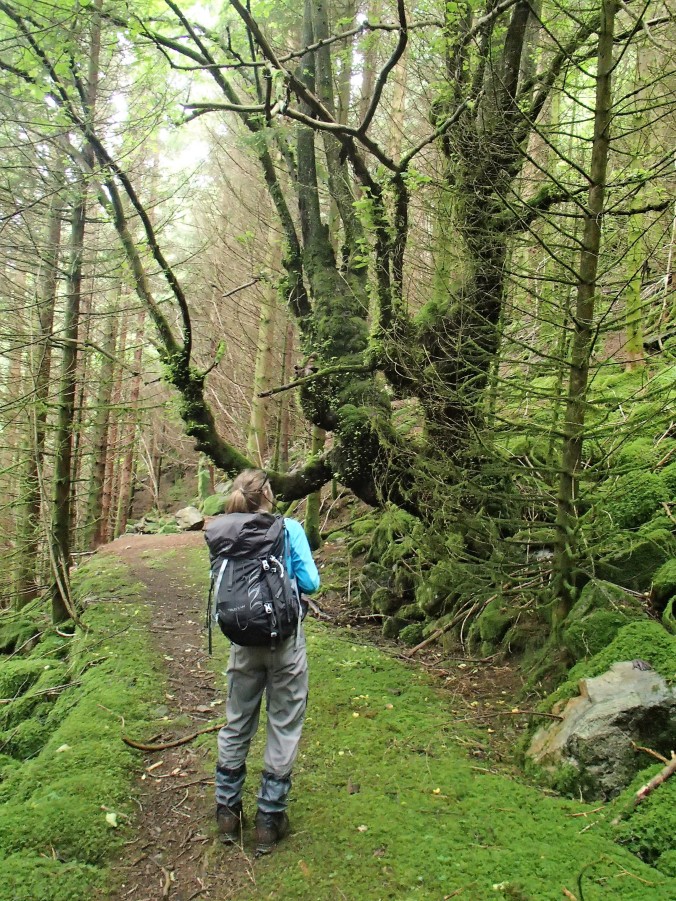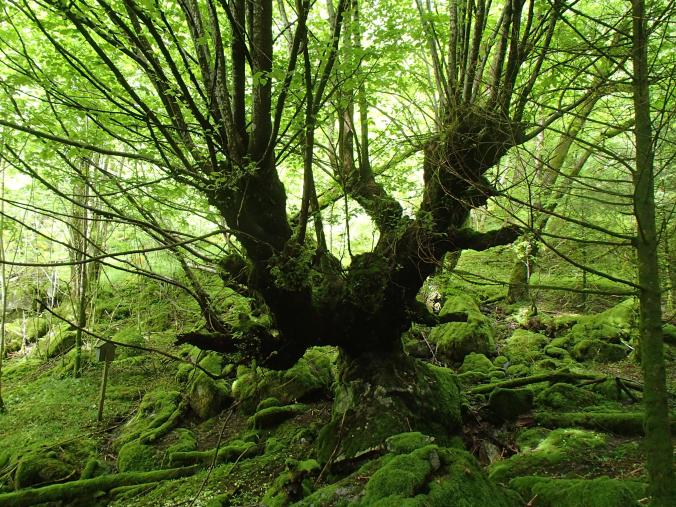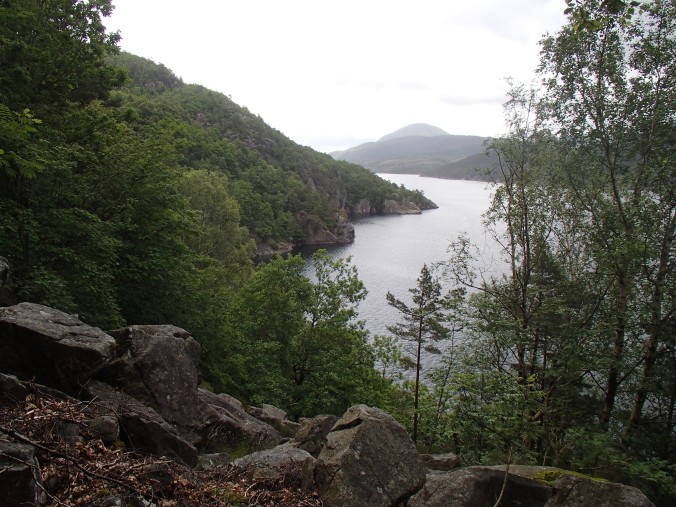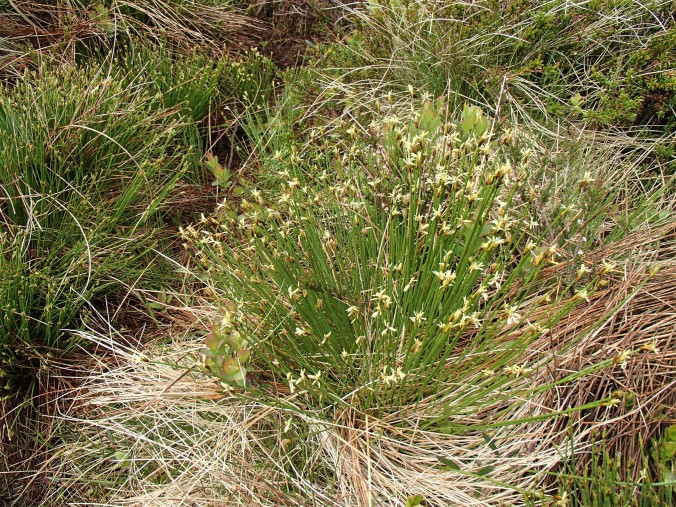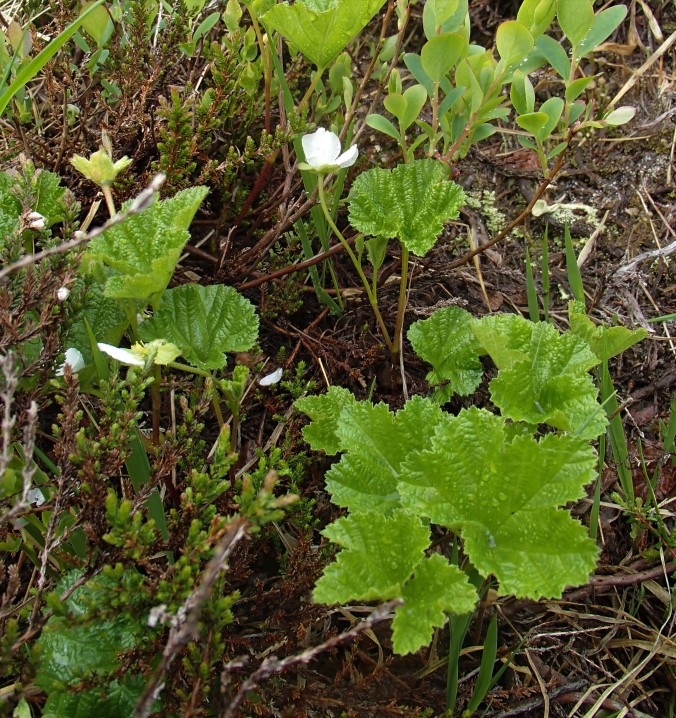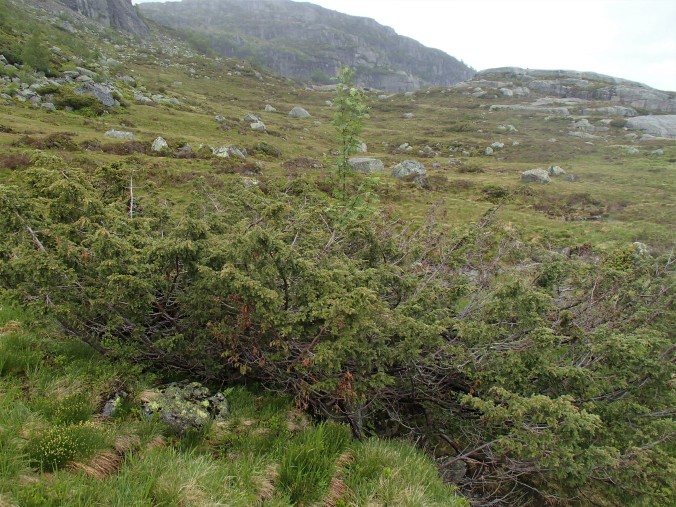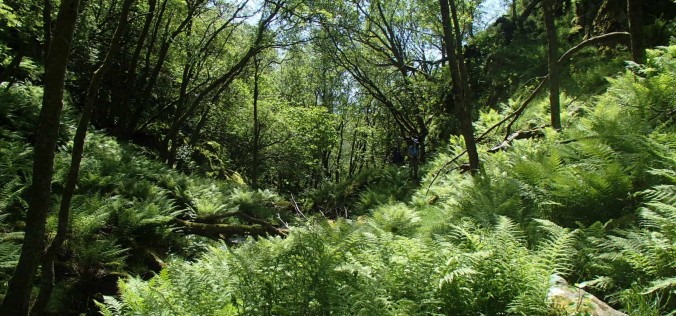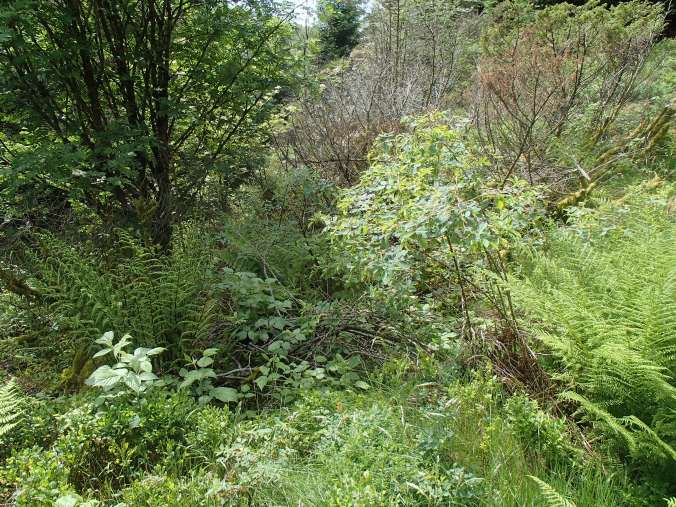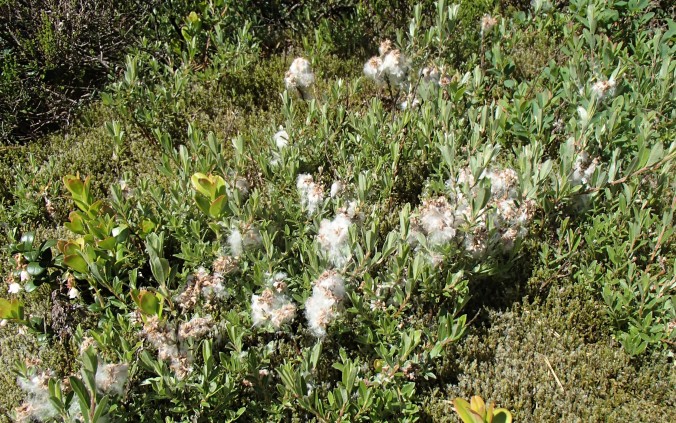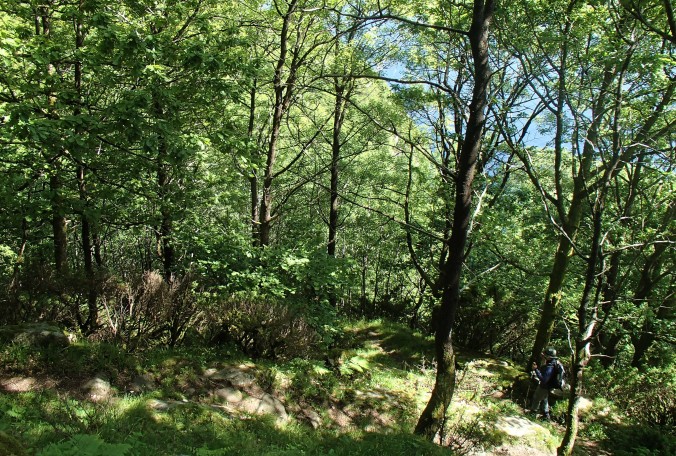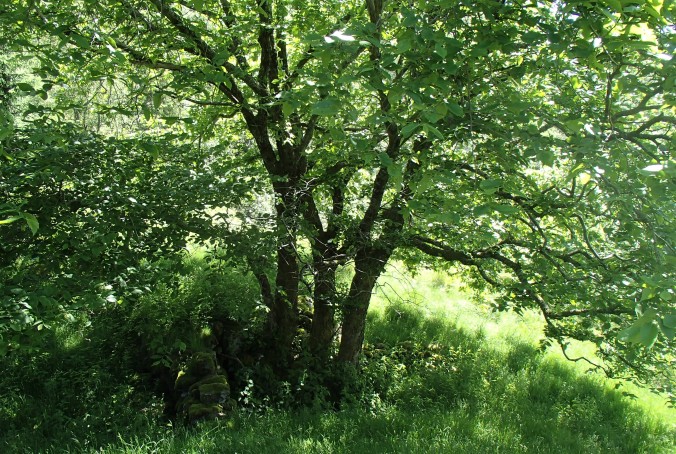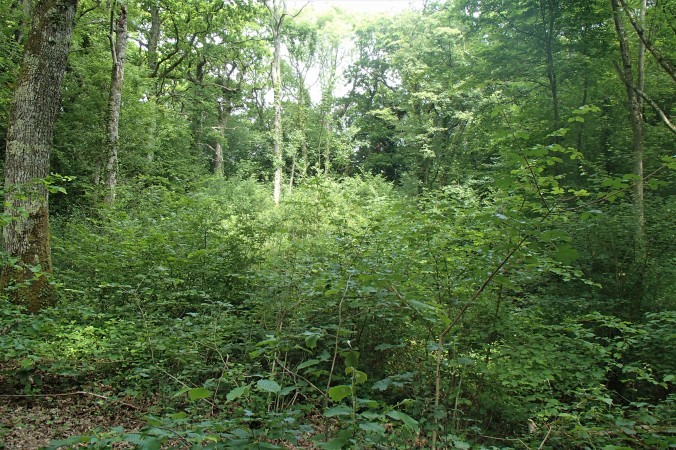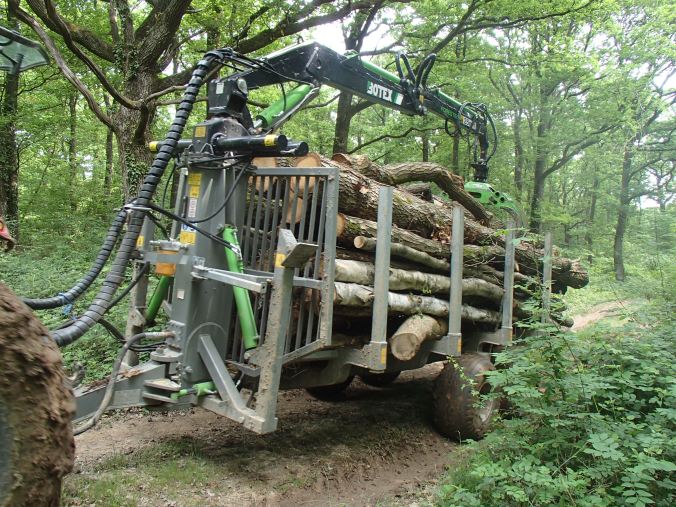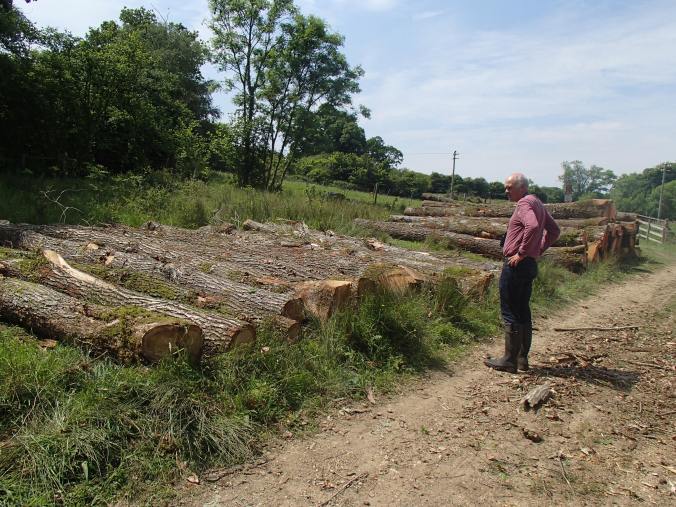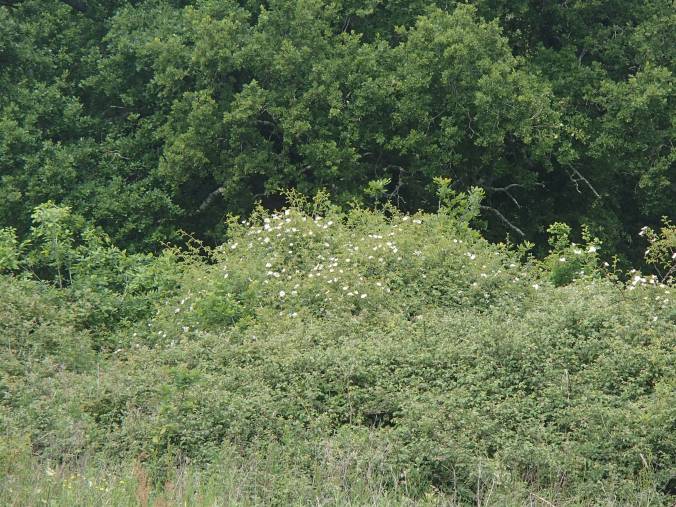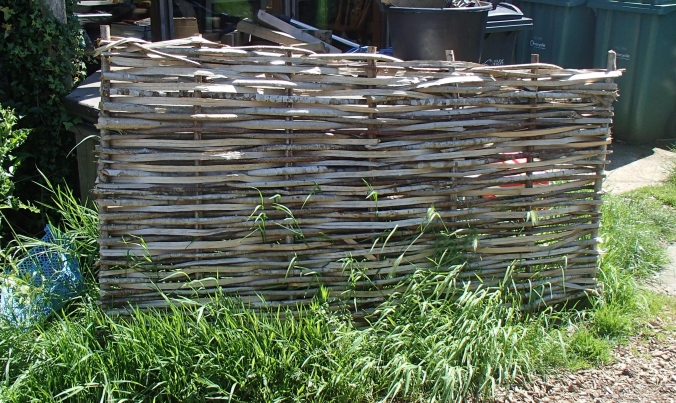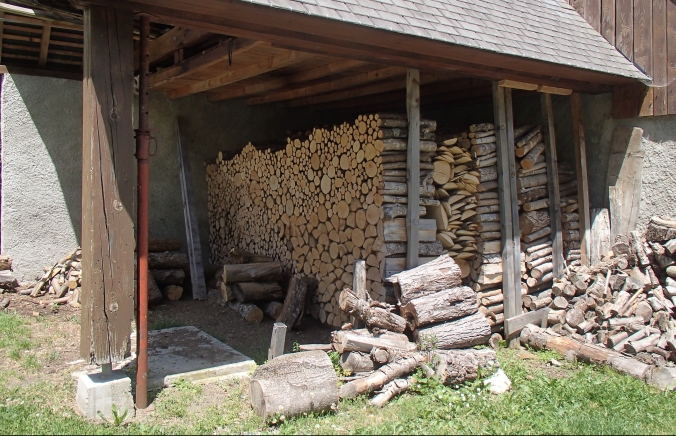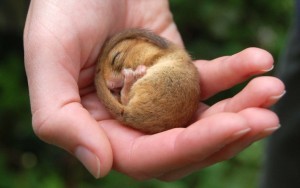It was an early start this morning to make the most of the long day – this of course being the longest of the year! We met up with Fylksmannen ecologists Auden Steinnes and John Inge Johnsen to take a ferry across the Sound of Stavanger followed by a short drive to a Scots pine wood that has developed on an upland area which (like most uplands round here, we are beginning to learn) involves scaling lower slopes that are practically vertical in order to access the more gently rolling uplands.
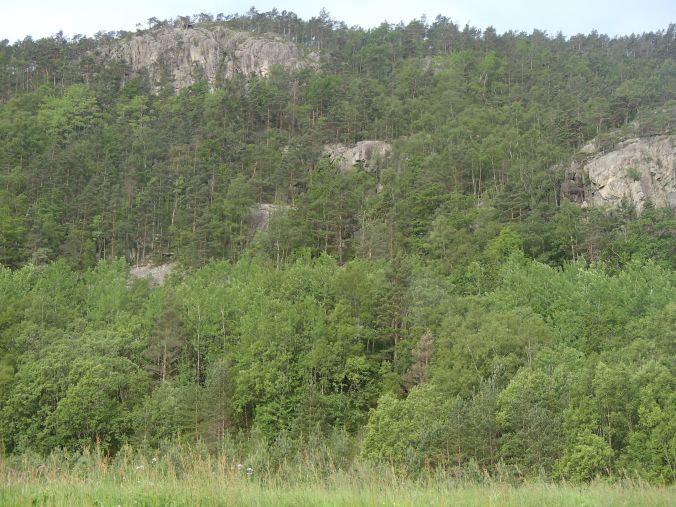
We felt very much “at home” in this woodland, for in many ways it was very similar to our own native pinewoods. Except that there were some notable differences. Whilst the woodland itself was dominated by Scots pine, the canopy also contained frequent birch, aspen and rowan. There were occasional ancient oaks and, in places, a well-developed juniper understorey. This forest was also extensive – not like anything we have in Scotland, covering over 4 square kilometres with pine dominated woodland. It is a scale of natural forest that we just don’t have in Scotland. Consequently there is room for a much greater range of structural and species diversity – and that is just what we found.

The field layer was dominated by a luxuriant thick carpet of mosses and blaeberry, richly peppered with all the usual pinewood associates such as twinflower, lesser wintergreen, serrated wintergreen, tormentil, cowberry, chickweed wintergreen, May lily, wood anemone, clubmosses and lichens. Here also, unlike Scottish pine woods, northern bilberry and dwarf cornel were frequent and abundant.
The wood was also known to contain a number of red data book lichens, and Auden and John were today surveying and collecting samples to augment this knowledge.
The Rogaland Fylkesmannen is in the process of creating a nature reserve over this bit of woodland, but not all owners are in agreement, and a recently bulldozed track for timber extraction right through the middle of the forest shows that the Norwegians are up against all of the same issues that we also face in Scotland.
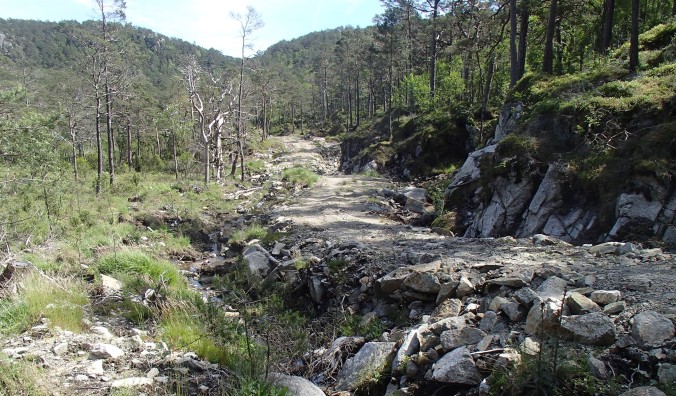
On the whole, apart from in the bogs, the soil in this forest is very thin – a few inches over bedrock. We had noticed that the canopies of many of the trees seemed very sparse, particularly when compared with our trees back home. A possible explanation for this could be that because of the poor soils the trees are nutritionally limited; they are simply growing very, very slowly. In this forest the trees are all tall and straight-grown – unlike our granny pines – a consequence of having grown up in a forest where recruitment is through colonisation of the gaps created when older trees die or are blown over, rather than growing up in an open, grazed landscape where they can develop full open canopies.
A stand of huge old aspens that had recently blown down bore witness to how thin and rocky the soil is:
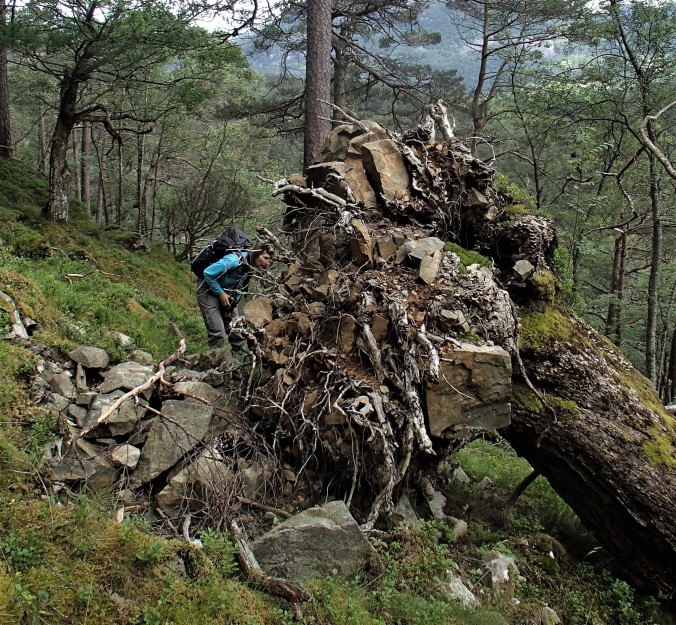
We did not see much evidence of herbivores in this forest – there are red deer and occasional moose using the area, but they are not browsing on the pine or birch saplings. Saplings of rowan and aspen however were showing signs of heavy browsing, to such an extent that we felt if this level of browsing was to be sustained, the next generations of trees in this forest would certainly lack the diversity of previous ones.
There was lots of standing and fallen deadwood – this is important for supporting amongst other things, the 5 species of woodpecker that are found here.
During the course of the day there was a fair bit of discussion about the age of the pine trees in the forest. Initially we had judged the majority of the trees to be fairly even-aged, and comparing them against growth rates that we are familiar with in Scotland we guessed them to be around 100 years old. This also fitted the wider picture of the known history of woodland exploitation in south-west Norway, which is understood to have been almost entirely cleared of its forest by about the 1920s. Unfortunately, the Norwegians do not have old maps such as we do in Scotland that they can use to verify the age and continuity of a given forest. As a proxy they use maps from the 15th and 17th centuries that show the location of saws, and they use these to make informed conclusions about the historical distribution of woodland at that time.
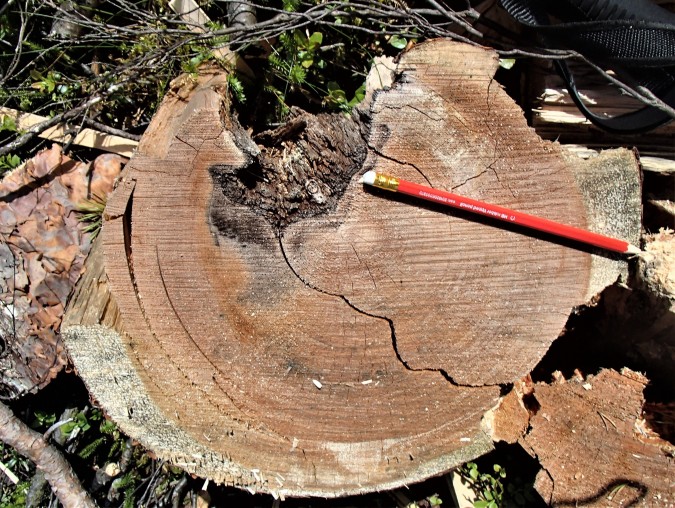
In the process of bulldozing the new track referred to above, a number of pine trees had been felled, and we took the opportunity to count the growth rings of these trees. We were quite amazed at what we discovered. The growth rings were incredibly tightly packed proving that these trees really are growing very, very slowly indeed. A stump of around 30cm was over 150 years old. Another nearby stump (not particularly large) we estimated to be over 300 years old.
Granny pines such as this one being hugged by John (girth 2.7m) could be well in excess of 300 years old. Trees of this size occurred throughout the forest.

These insights raised interesting questions about the history of Svinesmarka forest which appeared to be not the even-aged result of the cessation of forest exploitation that we had presumed. Could this forest in fact be a remnant of the ancient forest where recruitment and senescence are in balance; with a range of age classes from sapling trees through to standing dead ancients? We wondered how it could have survived the exploitation that had affected most of the semi-natural woodland of the region at that time. Possibly it is a little too remote, and also extremely inaccessible (before the days of bulldozed tracks). Either way, the revelation I think made us all look on the forest with a new and even greater reverence.
All in all a truly wonderful place to experience!








